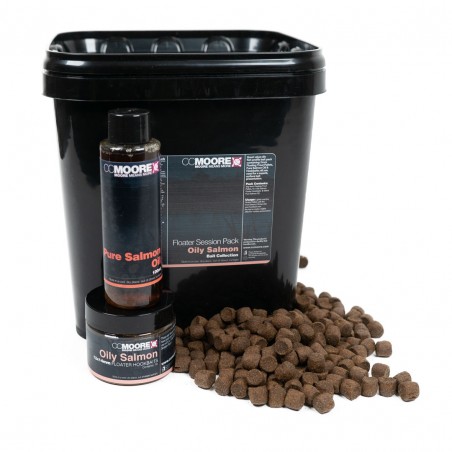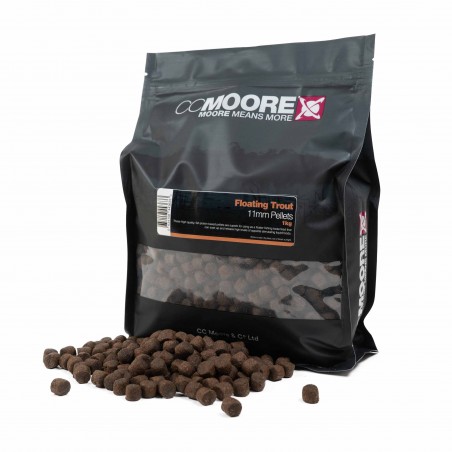Catch More Carp Off The Surface- Mark Pitchers
Catching carp off the surface has to be one of my favourite forms of fishing, if not my favourite. Nothing beats the thrill of watching a big pair of lips approaching your hookbait, only to veer away at the last minute, leaving you shaking and filled with adrenaline, looking for that next chance. I guess surface fishing is also a proactive style of angling, whereby you are having to work to get bites throughout the day, keeping you thinking and striving towards that next bite. I guess above all though, is that floater fishing is visual; you can see everything that is going on in the swim and that aspect is what makes it so intriguing and also insightful as to how the fish are moving, feeding and reacting to the food items and conditions present. Having floater fished on all manner of venues over the years, from well- stocked venues to tricky pits, I have certainly refined my approach and now utilise a very simple, but very effective technique in terms of feeding and technicality, giving me confidence that I can catch carp from the surface on any venue when the conditions are right for it.
.jpg)
A lot of people out there seem to think that surface fishing is difficult, well in fact, it is a much better insight into what is happening out in the pond as opposed to fishing on the deck. Obviously, locating the carp is the most important factor, once you have found them either on the surface or just below the surface, it is then a case of judging the situation. If it isn’t that obvious, using a good pair of polaroid’s, you will be able to see them in that top foot or so of the water column. On a warm sunny day, you will often find fish sheltering in the slack water, out of the breeze, behind islands, bays, sheltered areas that receive the sun and warm the water considerably. As the sun moves, certain areas of the lake will receive shade or direct sun, so it is worth paying close attention to the areas that receive long periods of warmth.
.jpg)
Personally, my time is limited for my own angling, which is where floater fishing provides a great way of catching carp on limited time, be that a day session or a few hours of an evening. When it comes to tackle, you can travel light with minimal gear, simply a rod and reel, landing net and unhooking mat, plus a carryall which stores both floaters and terminal tackle needed for a trip. I use the Fox bucket carryall, allowing me to store my floaters in the central bucket section, utilising the side pockets for floater essentials such as hooklinks, floats, hooks, sunglasses and of course, sun cream!
.jpg)
.jpg)
.jpg)
When it comes to actually tackling up for floater fishing, it is important to get it right and more so, balanced. All of your end tackle is a great deal more visible on the surface as opposed to the lakebed, which is why it is important to scale down in order to convert bites. Starting with the rod and reel; a soft, through action rod, such as the X3 floater combined with a baitrunner style reel is perfect, allowing you to hold the rod for long periods of time and provide that balanced, cushioned set- up when playing a carp. Reel wise, I use the EOS 10000FD; I see a lot of people using too smaller reel, this result is bad memory on the line and means it coils on the surface, giving you poor presentation and little control over the float. The reel needs to be small, but boast a big enough spool so the line does not retain any memory.
.jpg)
.jpg)
A dedicated surface fishing monofilament is the next key component, which I prefer in a clear colour to blend in with the sky when the fish are looking up from below. To my mainline I will attach an XL Fox Bolt Bubble float; this I will fill with water to gain weight, allowing me to cast well beyond the feeding fish when it comes to getting a bait in place. I have always found the XL floats to be most effective, significantly improving the hooking properties, much like that large 4oz leads I would normally be using when fishing on the bottom. A lot of anglers think that the float spooks the fish, I have personally never found this to be true, I have witnessed fish nudge the float, but I can certainly say they do not associate it with any form of danger.
.jpg)
Hooklink wise will depend largely if there are snags or weed present, but I would usually opt for the 12lb version, as it is slightly thinner and a little more discreet when floating on the surface. Once again, a dedicated floating link is important, which is why I choose to use the Fox Zig/Floater link, stepping up to the 15lb version in challenging conditions. The ability for it to float consistently is that, if it were to sink, it would spook to fish feeding directly below your hookbait. Further to that, the hookbait itself will end up being dragged towards the float, which is what you want to avoid at all times, maintaining that separation between the float and hookbait. If you find that your hooklink is not staying buoyant, you can simply rub a small amount of Vaseline up the link to ensure it does.
.jpg)
I personally prefer to use a short hooklink of around 2ft, of which I will whip a KD style knotless knot, with the hair long enough to ensure the hookbait is mounted tight to the shank. With the hookbait being tight to the shank, it works as a silhouette to mask the small hook, ensuring that the fish do not spook off when approaching the hookbait. To finish the floater rig, I simply slide a small piece of fine silicone tubing over the eye of the hook to ensure the gape remains wide open, before attaching it to the swivel of the XL bolt bubble.
.jpg)
When it comes to feeding, I first start by introducing floaters to build up their confidence. For close range feeding, I use the throwing stick and for medium to long range work, the impact spod is my go- to baiting tool. I begin by introducing small floaters to begin with, the 6mm CCMoore Floating Trout Pellets. I have often found these small ones particularly good at getting that initial feeding going. Once the fish are up and gulping down the smaller floaters, I then start to introduce the larger 11mm ones, mixed with the smaller ones.
.jpg)
The quantity that you introduce depends greatly on what you are seeing and how the fish are reacting; some days, they will be competing heavily for them and on other days, it will just be the odd one or two taking them cautiously. There are no hard and fast rules when it comes to feeding them, it is all about watching how they feed, gauging the situation and adapting.
.jpg)
A common misconception is that you must build up swim for ages, quite often a chance can come in the initial period of feeding, with the carp pack- manning from the off, and then the feeding dies off quickly. You need to see how the fish are feeding, the level of competition that has built up, in order to determine when to make a cast. It could be after 5 minutes, but it could be a few hours.
.jpg)
I certainly like to pimp my floaters with the addition of oil, not only is this to boost the overall attraction, but it serves a valuable purpose and that is to flatten off the surface in order for you to see how the floaters are drifting. On days that are windy with a strong breeze or side wind, I add neat oil to the impact spod when baiting up, ensuring that the surface ripple is flattened right off. I have found that the fish do tend to prefer feeding in the flat water, so if you are unable to find an area of calm water on the lake, spodding out the oil can certainly work in your favour. The oils I use are fish based, such as the Tuna, Halibut or Salmon oils from CCMoore.
.jpg)
.jpg)
In terms of baits, what I would say is that trout pellets are far better than dog biscuits. Dog biscuits do work and have caught carp for decades, but trout pellets are designed to stimulate fish to feed. On days when those carp are feeding reluctantly; the trout pellet provokes a better feeding response in tougher situations. When it comes to hookbait options, either artificial dog biscuits, floating pellets, or duo floaters are my preferred choice, closely mimicking the free offerings that I am feeding.
Freelining is something that is also important and is always in my armoury; on really warm days, fish can be tucked away in weed beds, basking in the sunshine, clearly visible close to the surface. In this situation, floating crust can be incredibly devastating, hiding the hook within the piece of bread itself. By carefully watching and sneaking about the bank, you can place small pieces of crust directly in the carp’s vicinity, being careful not to make any unwanted or alien disturbance.
I have caught so many carp within minutes of using this tactic and it can be a very effective tactic on limited time, staying mobile and taking your chances. What is worth mentioning is that when doing this type of fishing, I will up my tackle; bigger hooks and stronger mainline, allowing for a hook and hold type of situation in order to land the fish.
On those days where the wind is a little too strong or there is a drift making it tricky to present naturally, I may choose to fish an over depth zig while still feeding the floaters. This will allow me position static baits either just on the surface or just below, while freeing my hands up to feed floaters.
The details highlighted above showcase how I go about floater fishing; it certainly is a tactic that is thoroughly enjoyable and would recommend to people to give a go!



